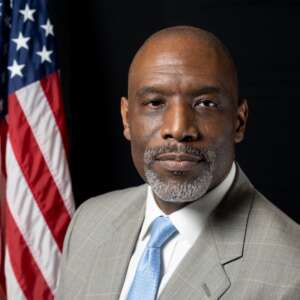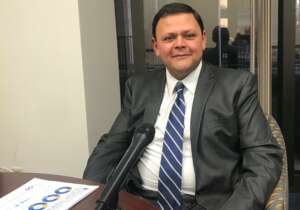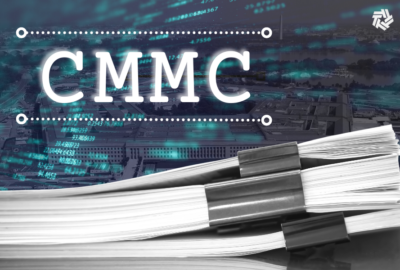Buzzword for 2024: AI; Biggest concern for 2024: Workforce
While the buzzword of 2024 may be artificial intelligence, or some derivative like generative AI or large language models, the biggest challenge and focus for...
While the buzzword of 2024 may be artificial intelligence, or some derivative like generative AI or large language models, the biggest challenge and focus for federal IT community will continue to be the people.
The workforce, return to office, challenges to hiring and retaining qualified and skilled employees and all those things that come within this area trumps budget and continuing resolutions and even the impending presidential election.
Current and former federal IT and acquisition experts say agencies ability to demonstrate progress along the zero trust and customer experience journeys as well as taking the first steps to meet the Biden administration’s executive order around AI are top of mind. But without a doubt — and what has been the common refrain over the last decade plus — without qualified employees, many of these efforts will fall like a house of cards.
Federal News Network asked a panel of current and former federal executives for their opinions about 2024 and what federal IT and acquisition storylines they are following over the next 12 months.
- The panelists are:
- Gundeep Ahluwalia, chief information officer of the Labor Department
- Jonathan Alboum, a former chief information officer at the Agriculture Department and now federal chief technology officer for ServiceNow
- Steven Brand, deputy chief information officer for resource management, for the Department of Energy
- Guy Cavallo, the chief information officer at the Office of Personnel Management
- Kevin Cummins, a former Senate staff member on the Appropriations and Commerce, Science and Transportation committees and now a partner with the Franklin Square Group
- Mike Hettinger, former House Oversight and Reform Committee staff member and now president of Hettinger Strategy Group
- Renata Spinks, former assistant director and deputy chief information officer for information, command, control, communications and computers (IC4) and now founder of CyberSec
What are two IT or acquisition programs/initiatives that you are watching closest for signs of progress and why?
MH: The Cybersecurity Maturity Model Certification (CMMC) continues to simmer in the background, as it has for the last couple years. Now that the interim final rule for CMMC has been issued, that’s going to kick off a flurry of activity in government and industry that we will all be watching closely.
The second is software security requirements. How these are implemented — and how much of a burden they become for contractors — could have serious long-term consequences for the federal government.
SB: One of our top priorities for telecommunications continues to be the transition of services from the expired Network, WITS 3, and Local Telecommunications Services contracts to our Enterprise Infrastructure Solutions (EIS) contracts. Completing this transition in 2024 will provide our department with a flexible platform to support more modern telecommunications service offerings, new innovations, and overall cost savings.

Additionally, while we are still in the pre-award phase, the department is also re-competing its CIO Business Operations Support Services (CBOSS) blanket purchase agreement. In the coming year, we expect CBOSS 2.0 to be a game-changing procurement vehicle, providing streamlined and cost-effective access to IT products and services across the DoE enterprise.
JA: Customer Experience — Even though the Biden CX executive order is a few years old, there is still plenty of focus on CX across government. Most agencies have customer experience leads and are looking at how to apply CX beyond the citizen. For example, agency employees are customers of IT, human resources, etc. These customer experiences (aka employee experience) is receiving more attention as are government-to-government customer experiences. Many agencies receive services from other agencies or are responsible for reporting information to agencies. These experiences are also receiving more attention. Combined with the IDEA guidance, I expect agencies to make big strides in 2024.
Zero Trust — All agencies are expected to implement zero trust architectures in the coming years. They should all have plans by now and be working on aspects of implementation. However, ZTA is not one project or product, it’s many projects and many products implemented over multiple years. These long-term projects in government are generally hard to execute. Add in government’s tech debt and it becomes even more complicated. In 2024, I’ll be watching for signs of demonstrable progress by agencies on their ZTA journeys.
KC: 2024 should be the year when the federal government is not just talking about AI but actually buying and deploying AI solutions. For all the focus on AI in 2023, there is not that much government use of AI disclosed by OMB to date.
Implementation of the AI executive order, including how the new White House AI Council and agency chief AI officers help accelerate adoption of AI tools.
GA: In 2024, we are looking forward to expansion of the Department of Labor’s Unemployment Insurance Identity Verification Program. To date, more than 90,000 people have benefitted from these expanded identity proofing services in six states. Thirteen more states will soon join them, with the ultimate plan to serve claimants nationwide. We developed an identity verification system that uses modern and emerging technologies to enhance security, reduce fraud and expand identity proofing services. We are hosting and maintaining the IT platform to reduce state infrastructure costs and personnel needs, as well as covering state transactional costs for the first two years of service.
We also expect to meet the White House deadline to address the cybersecurity executive order by the end of 2024. We are being very methodical, doing a gap analysis and identifying what our future end-state will be at the end of our zero trust journey. We are modernizing our systems while also maintaining our current capabilities. Most critically, we are enhancing our data and network security, which is important not only for our department staff but for the workers, job seekers and retirees who access our services.
GC: Everyone will be looking for AI resources — both as federal employees and as contractors. At OPM we will continue to update hiring practices to improve the hiring of AI Specialists, but the private sector also has a great demand for these limited experienced resources.
Continued evolution of key programs from the General Services Administration in fiscal 2024 is important, such as the FedRAMP program continuing to speed up its approval process and Login.gov continuing to enhance its authentication solution, and additional enhancements to the implementation of high speed cloud connections through its telecom programs.
I have now moved three federal agencies to the cloud and in all three cases the log pole in the tent was getting our high speed connection established in less than six months.
RS: Long-range hypersonic weapon. The Defense Department developing a hypersonic missile that will travel at least five times the speed of sound and strike targets at ranges of at least 1,400 miles allows increased preservation of life, avoids costly or impractical manned aircraft attacks and deters the adversary’s aggression. It also allows the US and its allies to build trust amongst each other by way of an increased arsenal of missile defense capabilities.
IT Enterprise Solutions 4 Services for the Army. On the heels of ITES 3, this pending solicitation for March 2024 with an anticipated value of $12.1 billion is one to watch. With the many lessons learned shared by the Army Program Executive Office (PEO) over the past few months, an area to watch is how this range of services and solutions for enterprise infrastructure as well as info-structure goals with information technology services worldwide and how it would be secured. There was no real emphasis during the PEO lessons learned on how zero trust will be included as well as the cybersecurity of services. What is important is to ensure cyber is called out specifically and not lumped in as years past have shown as a service that is not critically measured against due to driving of costs, lack of critical thinking for implementation and playbook for modernized hybrid environment defenses and what the response protocols are when such infiltration occurs. This is especially important for congressional reporting, US Cyber Command reporting and to posture for the increased accountability for cyber attacks throughout industry, the defense industrial base and government contractors.
Rank in order among budget (think CR and appropriations process), workforce (think return-to-office, retirements, hiring challenges) and the presidential election (think run up to November), what will impact the federal IT/acquisition community the most and why?
SB: I would rank the run up to the election as third, the budget as second and the workforce as first, but only because you asked me to rank all three. Otherwise, the workforce could occupy all three positions. The appropriations process and impact of CRs have become commonplace. That does not mean that there are no impacts, of course, but we have had to learn to plan for those, much as we have with the impact of recurring election cycles. However, given the ever-evolving world of IT, coupled with significant demographic changes in the population of federal employees, and the trends introduced by the pandemic, workforce concerns are of vital importance. Issues with recruiting, developing, and retaining IT and cyber talent are not new, but the issues will continue to intensify and demand deliberate planning to mitigate the risks.
RS: Impact Ranking:
- Return to Work –Workforce
- Budget
- Presidential Election
Everything starts with the people. Even amongst a continuing resolution, there are statistical references to productivity and accomplishments in the federal workforce. The hiring is still not as quick as it should be and the talents needed are continually trending gapped. If the federal government does not find ways to acquire and retain talent we will continue to have a readiness issue.
Within a CR, it is not a new occurrence. Culturally. CRs are expected, not wanted but definitely expected and as such, most financial leaders operate within those expectations. However, with a fully funded budget, we still experience wasteful spending, poor execution, delayed acquisitions due to workforce burn out and expertise, the domino effect will continue to stem from the PEOPLE.
JA: Budget will have the biggest impact on the federal IT/acquisition community in 2024. There is a chance for a full year continuing resolution, which would allow a 1% across-the-board spending cut per the prior debt-ceiling deal. If this cut becomes a reality, IT programs would likely be affected. Further, a full-year CR would prevent agencies from starting new projects, further slowing the government’s digital transformation.

Workforce will remain a challenge as always. There’s an ongoing battle for tech talent inside and outside of government. Further, agencies still have differing return to office policies. Some agencies are requiring employees to be in the office for set days every pay period. Other agencies remain focused on building on the success of telework during the pandemic. Workplace choice and flexibility are now an expectation for many workers. Agencies that push against the grain may have higher rates of attrition and find it harder to recruit replacements.
In my experience, the presidential election years have not had a big impact on federal IT. Agencies continue to execute their core missions and implement administration initiatives during an election, meaning that projects and operations continue as usual.
MH: Budget — As we head into 2024, we still don’t have any of the fiscal 2024 appropriations bills signed into law. A shutdown is certainly not out of the realm of possibility and as we know this slows contracting and creates a lot of uncertainty for employees and contractors alike.
Workforce — Return to office is largely a bust. Where and how we worked has changed forever over the last four years, so what we need to figure out is how best to ensure that we manage what is now a geographically diverse hybrid workforce and more effectively plan for their success.
Presidential election — The 2024 election and its potential impact of the federal government sits largely in the background at this point, but clearly federal employees could be impacted positively or negatively, depending on the result.
KC: Budget
Workforce
Presidential election
Budget will impact the acquisition community the most as Congress and the White House seek to find agreement on what government funding should look like in the post pandemic era. The federal government will begin the new year operating under a continuing resolution (CR) and could face a potential, partial shutdown after Jan. 19. The 2023 budget deal to avoid a national debt default includes a provision to incentivize Congress to pass full-year appropriations instead of CRs by automatically revising budget authority if a CR is in effect in January 2024. All of this creates additional uncertainty for agencies and the federal acquisition community alike.
GC: Budget — An approved fiscal 2024 is crucial and key to continue IT modernization; we must know how much money we need to invest.
Presidential election — Presidential election may influence the decisions on the 2024 budget, which may have a significant impact on IT modernization and being able to plan on long term IT project initiatives.
Workforce — The average age to the federal workforce continues to be closer to retirement than at any time in the past. An increase in meaningful in-person work while maintaining telework flexibilities will allow federal agencies to compete with private sector on hiring new talent and retaining talent, especially in technology, IT and AI.
GA: Without a doubt, the workforce. People are at the heart of our mission and our success. We want to bring in the best minds to develop and maintain the technology that delivers that mission to America’s public. That’s a challenge when the private sector is competing for the same talent pool, especially at a time when we are balancing the recruiting demands for younger, tech-savvy employees and retirement waves of an aging workforce. We are addressing ways to attract — and retain — staff. We are offering reskilling and upskilling. We are recognizing employees when they go above and beyond. We are also being mindful as we address the OMB memo on the return to office. We are providing the IT support and network capability for our staff to work successfully, whether in person, remotely, or in a hybrid environment.
As for ranking budget and the presidential election, they are pretty closely tied when it comes to priorities and what will ultimately get funded and how.
If 2022 and 2023 has been all about zero trust and customer experience, what do you think will emerge as the buzzword of 2024?
GC: No question that it is artificial intelligence.

GA: Generative AI is already playing a pivotal role in content creation, and it’s gaining traction with natural language processing (NLP) to support customer service with chat bots and call center routing. But there is also a potential for misuse. A newly released OMB memo focuses on the risks of relying on AI to carry out agency actions and decisions. We must remember, GenAI uses data to retrain the model so we must make sure to provide quality data and monitor against biased algorithms. That requires human oversight.
JA: Generative AI will remain be the hottest topic in 2024. Everyone is talking about how GenAI will change the world. It definitely has the potential to radically change how government operates. There are clear use cases in customer service, document intelligence like Freedom of Information Act (FOIA), fraud detection, administration and IT. However, like all emerging technologies, its successful implementation at a government agency will be challenging. The framework set forth in the AI EO will help, but there are likely more headwinds to GenAI taking hold in an agency than in the commercial sector, including employee unions, Congressional oversight, and agency imposed restrictions.
MH: It’s already emerged but the biggest buzz as we heard into 2024 is artificial intelligence. The AI executive order, followed by the draft OMB AI implementation memo set in motion a flurry of activity that surpasses even what we saw 10-12 years ago with cloud. If you’re an AI company, it is business critical to understand how the plethora of proposed policies and regulations is going to impact your business and if you’re not an AI company, you’re about be.
KC: Safe, secure, and transparent AI is the new buzzword. While some of the novelty of AI since the release of ChatGPT has worn off, AI solutions will be increasingly adopted and used to help agencies meet their missions.
RS: Buzzword for 2024 — if it were up to me — it should be accountability.
However, it will likely be some other technology word that will drive industry to develop solutions/technical tooling versus the more difficult part of this cyber warfare fight we are continually in, which is strategy, governance, critical decision making, metrics and execution. It appears when accountability is prioritized and funded, leaders will have what they need to further invest in leadership, people, training, and simulation technology/test bed environments. This will provide leaders with what it is they need to ensure their level of accountability matches their ability to lead with day in and day out support to the defenders, operators and securers of the network and its real time threats.
Copyright © 2025 Federal News Network. All rights reserved. This website is not intended for users located within the European Economic Area.
Jason Miller is executive editor of Federal News Network and directs news coverage on the people, policy and programs of the federal government.
Follow @jmillerWFED







